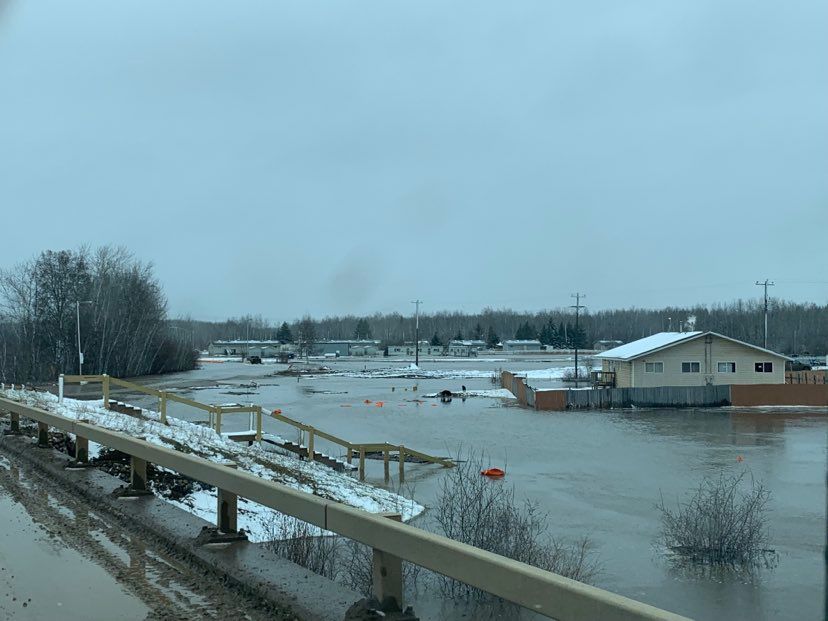The chief administrative officer of a Metis settlement in northwestern Alberta says its members are feeling scared as floodwater that was up to the knees a few days ago recedes, exposing the damage left behind.

“Some of these homes don’t have running water right now,” said Justin Gaudet of the Paddle Prairie Metis Settlement, where about 800 people live.
“The members are very tired, very stressed, very anxious,” he said Wednesday. “They’re asking for answers but we’re not sure ourselves if we’re going to have the capacity to continue to do the things we’re doing.”
Gaudet said a local emergency alert was issued Sunday after rain and snowmelt raised water levels on six nearby rivers to heights that elders in the community last saw more than 50 years ago.
The alert is to automatically expire after seven days. He said they will reassess the situation and decide on Sunday if it needs to stay in effect.
Gaudet said the water level is significantly lower, but excessive moisture combined with contaminated water has a high potential to cause mould and unlivable conditions in the settlement that stretches over 174,000 hectares.
Some bridges are also damaged.
“A lot of our homes in the hamlet area sit on wood foundations and are nearly 40 to 50 years old,” he said. “Without the bridges, people can’t leave their homes.”
Gaudet said homes on the west side of the settlement, near Highway 35, remain at the highest risk because floodwater is taking longer to drain from the area. The settlement said it’s looking for the provincial and federal government’s help in assessing and repairing the damage.

Get breaking National news
He added the flood has been very traumatizing because it reminds community members of a fire that burned down half the settlement and forced evacuations in 2019.
The Dene Tha’ First Nation at Chateh, about 845 kilometres northwest of Edmonton, and the Little Red River Cree have also been under local emergency alerts due to flooding since the weekend.
Stephen Lacroix, managing director of the Alberta Emergency Management Agency, said water on Chateh and Little Red has not receded because of snowmelt.
About 1,100 people have been affected and some 676 evacuees from Chateh have been registered in hotels in the nearby town of High Level, he said.
Flood protection barriers called Tiger Dams are being set up around houses and the Beaver First Nation is providing additional aid, said Scott Johnston, a spokesman for Alberta Municipal Affairs.
“Alberta’s government has people on the ground to help impacted Albertans with relocations, with access to medical and social services, with road repairs and with overall coordination of the emergency response,” Johnston said.
Evacuation orders also remain in place for some communities north of the border in the Northwest Territories along the Hay River due to rising water levels, a statement from the territory said Tuesday.
The mayor of High Level said Tuesday some evacuees living in the town’s arena and hotels are running out of food.
“It’s a huge influx of people for our small community,” said Crystal McAteer.
Over the years, the town has housed hundreds of evacuees who have fled fires and floods. She said for the last three years the town has been lobbying the provincial government to fund a community centre that is designed to transition into an evacuation facility.
“This has been going on since 2003 and it’s just getting worse. This just intensifies why we need it.”
Gaudet said he and others continue to check on members of the settlement to ensure safety and to keep a close eye on water levels.






Comments